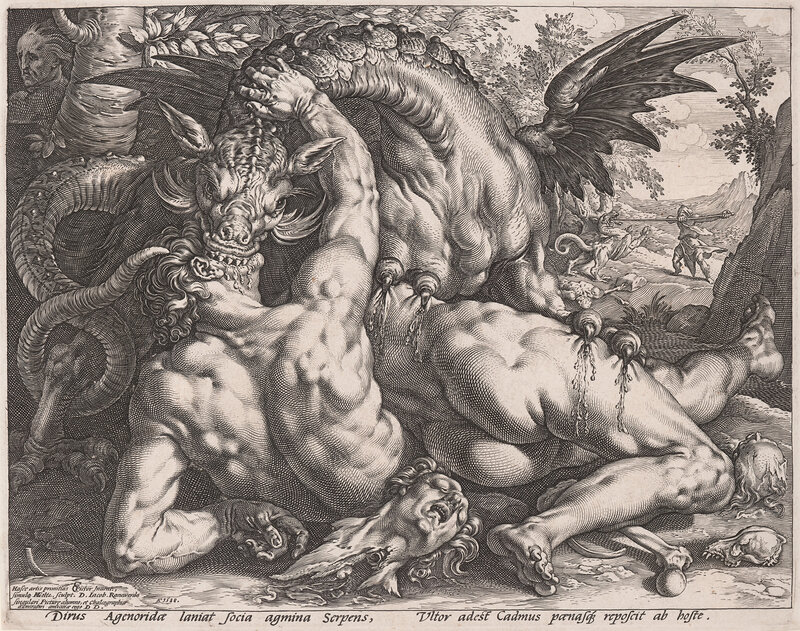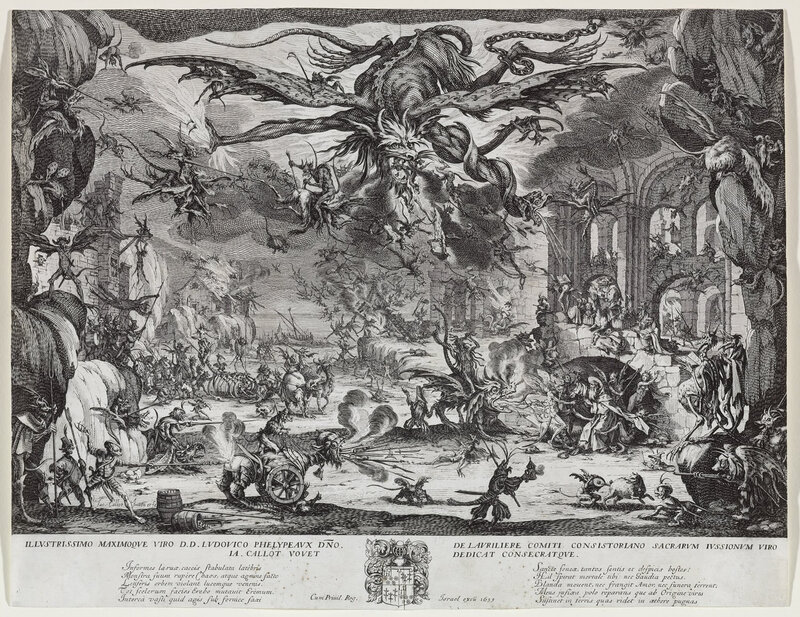November 29, 2019, to March 29, 2020
- A
thematic exhibition presenting some of the most iconic images of the
Renaissance and Baroque, including a major work recently acquired by the
Gallery
- Nearly 70 works produced 300 to 500 years ago by 45 German, Flemish, French, Dutch and Italian artists
- Special programming complements the exhibition, including activities where visitors can “tame the monsters”
Monsters and supernatural creatures –, sometimes horrifying, always fascinating – created between 300 and 500 years ago are the subject of a new exhibition of works on paper on view at the National Gallery of Canada from November 29, 2019, to March 29, 2020.
Beautiful Monsters in Early European Prints and Drawings (1450–1700) presents nearly 70 rarely exhibited prints and drawings by 45 artists selected from the National Gallery of Canada collection, including a number of recent acquisitions and promised gifts. Springing from the imagination of artists such as German painter and printmaker Albrecht Dürer (1471–1528) and fed by the collective fears of the Renaissance and Baroque periods, these images were produced using a variety of techniques including etching, engraving, woodcut and drawing.
“By looking at these works from the Gallery’s collection closely, one can see all the talent and ingenuity Renaissance and Baroque artists devoted to creating creatures that are both monstrous and refined,” said Sonia Del Re, PhD (Art History), exhibition curator and Senior Curator of Prints and Drawings at the National Gallery of Canada. “Visitors of all ages will be fascinated by these beasts from a bygone era that continue to fuel the imaginations of dreamers and creators today.”
Beautiful Monsters in Early European Prints and Drawings (1450–1700) is divided into four themes:
- Demons
presents illustrations of biblical stories and accounts of the lives of
saints. The works include a remarkable miniature drawing on vellum by
Flemish artist Johan Wierix (1549–1620) titled Frontispiece to “The Creation and Early History of Man,” c. 1606, which was donated to the Gallery in 2019 by Frank and Marianne Seger.
- Mythological Creatures
brings together images that illustrate Greco-Roman myths, often
involving hybrid creatures that are half-human, half-animal.

Hendrick Goltzius, The Dragon Devouring the Companions of Cadmus, 1588 ( National Gallery of Canada, Ottawa. Purchased 2019. Photo: NGC.
This section features The Dragon Devouring the Companions of Cadmus, a work by the famous Dutch engraver Hendrick Goltzius (1558–1617), which the Gallery acquired earlier this year. This masterpiece, a collaboration between the engraver and the painter Cornelis van Haarlem (1562–1638), was produced in 1588 based on a painting by van Haarlem, now in the collection of The National Gallery, London.
- Sea Monsters
features dangerous beasts emerging from the depths of the ocean and
includes
Andrea Mantegna, Battle of the Sea Gods (left side), c. 1485–88. Engraving on laid paper, 28 × 42.7 cm, National Gallery of Canada, Ottawa. Purchased 1915. Photo: NGC.
one of the most celebrated images in the history of printmaking: Battle of the Sea Gods (1485) by Italian artist Andrea Mantegna (1431–1506).
- Ornamental Beasts
comprises, among other works, small-scale models for decorating
utilitarian objects such as silverware, armour and ceramics with
fanciful figures.
The exhibition ends with the print Hell (1935) by M.C. Escher (1898–1972). It is the printmaker’s interpretation of a detail from the famous Renaissance painting The Garden of Earthly Delights by Hieronymus Bosch (c. 1450–1516), which he saw in Madrid in 1922.
Lucas van Leyden, Ornamental Panel with Two Sirens, 1528. Engraving on laid paper, 11.8 × 7.8 cm. National Gallery of Canada, Ottawa. Purchased 1914. Photo: NGC
Circle of Guilio Romano, Study of a Dragon, after
1530. Pen and brown ink with brown wash heightened with white on blue
laid paper, 12.3 × 12.3 cm. National Gallery of Canada,
Ottawa. Purchased 1972. Photo: NGC
Jacques Callot, The Temptation of Saint Anthony (second version), 1635. Etching on laid paper, 35.6 × 46.2 cm. National Gallery of Canada, Ottawa. Purchased 1993. Photo: NGC




